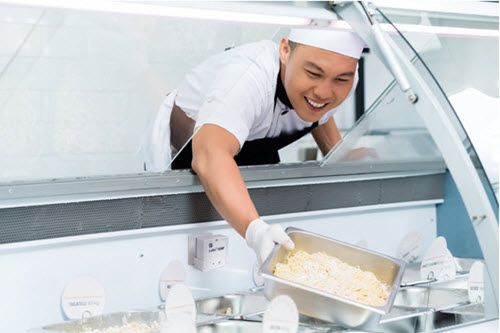LoRa Technology Transforms Temp Monitoring
Posted on 24th Feb 2021
 While ever-changing customer demands, new protocols for protecting staff and customers, and keeping pace with new technology all compete for operators’ attention during the ongoing COVID-19 pandemic, keeping food safe and avoiding costly health code violations remains a key concern.
While ever-changing customer demands, new protocols for protecting staff and customers, and keeping pace with new technology all compete for operators’ attention during the ongoing COVID-19 pandemic, keeping food safe and avoiding costly health code violations remains a key concern.
In the past, monitoring temperatures was tedious and sometimes ineffective as staff members manually checked and recorded temperatures in a handwritten log—but that is changing. Successful operators today are adopting smart strategies to maintain food safety, including more efficient automated systems, such as the DayMark Temp Monitoring Solution, powered by JRI. Utilizing elements such as wireless sensors, internet connectivity, and web-based dashboards, these systems collect data that helps operators increase the visibility and control of store equipment that maintains product freshness. The data can then be managed on a web platform using a PC, a tablet, or even a smartphone.
In addition to these features, the DayMark system utilizes the available, more advanced LoRa technology, which further increases efficiencies and improves practices by allowing for longer-range communication between system components. LoRa is especially useful in large-format locations that see heavy foot traffic and other obstacles such as equipment and coolers scattered across the store.
“The LoRa technology gives the system the ability to customize its frequency in order to best send messaging and avoid obstacles” says AJ Haas, category manager of food safety tech at Daymark. “This provides for more reliable results and the increased flexibility that larger footprint operations—such as supermarkets—need.”
That lower frequency also allows LoRa devices to transmit information though heavy materials such as stainless-steel freezers, which is a major upside in the grocery industry.
Mandatory Monitoring
Improper food temperatures are consistently cited as one of the most common food safety violations by the U.S. Food & Drug Administration and addressing food safety requires a rigorous temperature monitoring system.
Being able to access real-time performance data to address potential food safety issues—such as equipment downtime or refrigerant leaks—also reduces maintenance costs and results in improved energy efficiency. If tolerance thresholds are exceeded, alerts are issued immediately to help maintain the safety of temperature-controlled products.
Deploying automated temperature monitoring technology creates intangible benefits for customers. As strong brand awareness and a positive reputation come from delivering seamless customer experiences, investing in a wirelessly connected infrastructure that maintains food safety and freshness helps customers get the most out of their experience and keeps them coming back.
Article originally appeared on the Supermarket Perimeter website.


